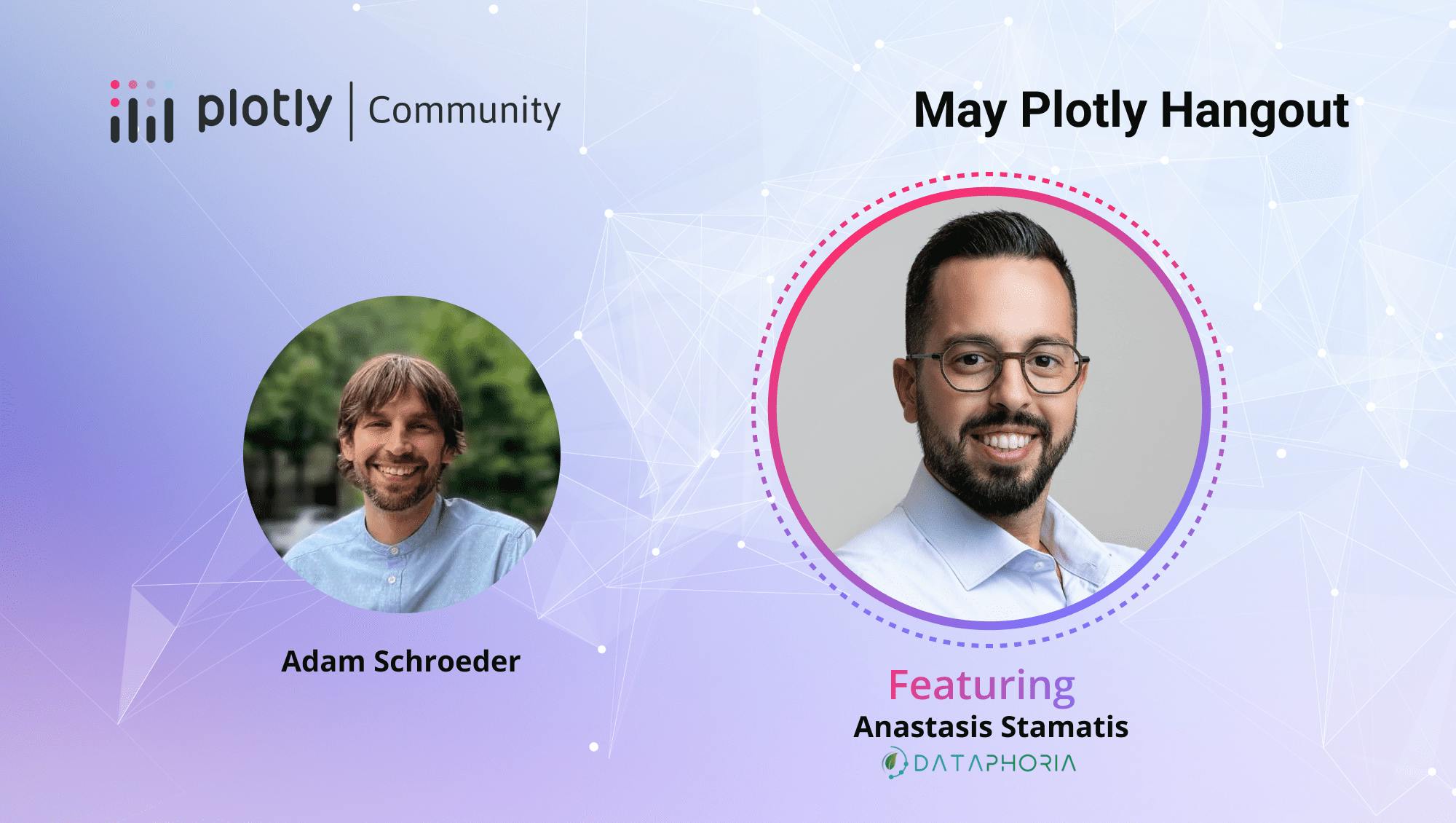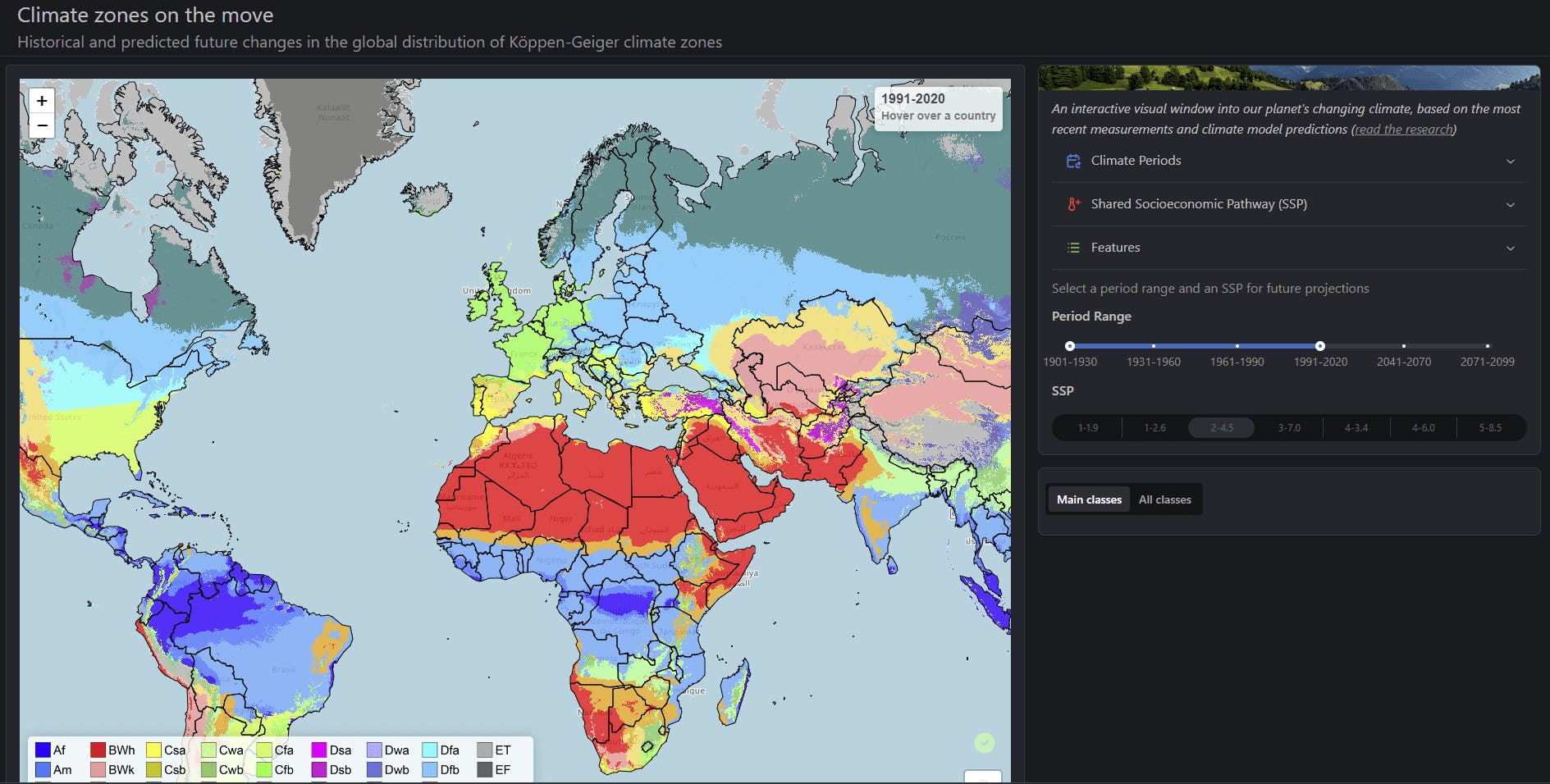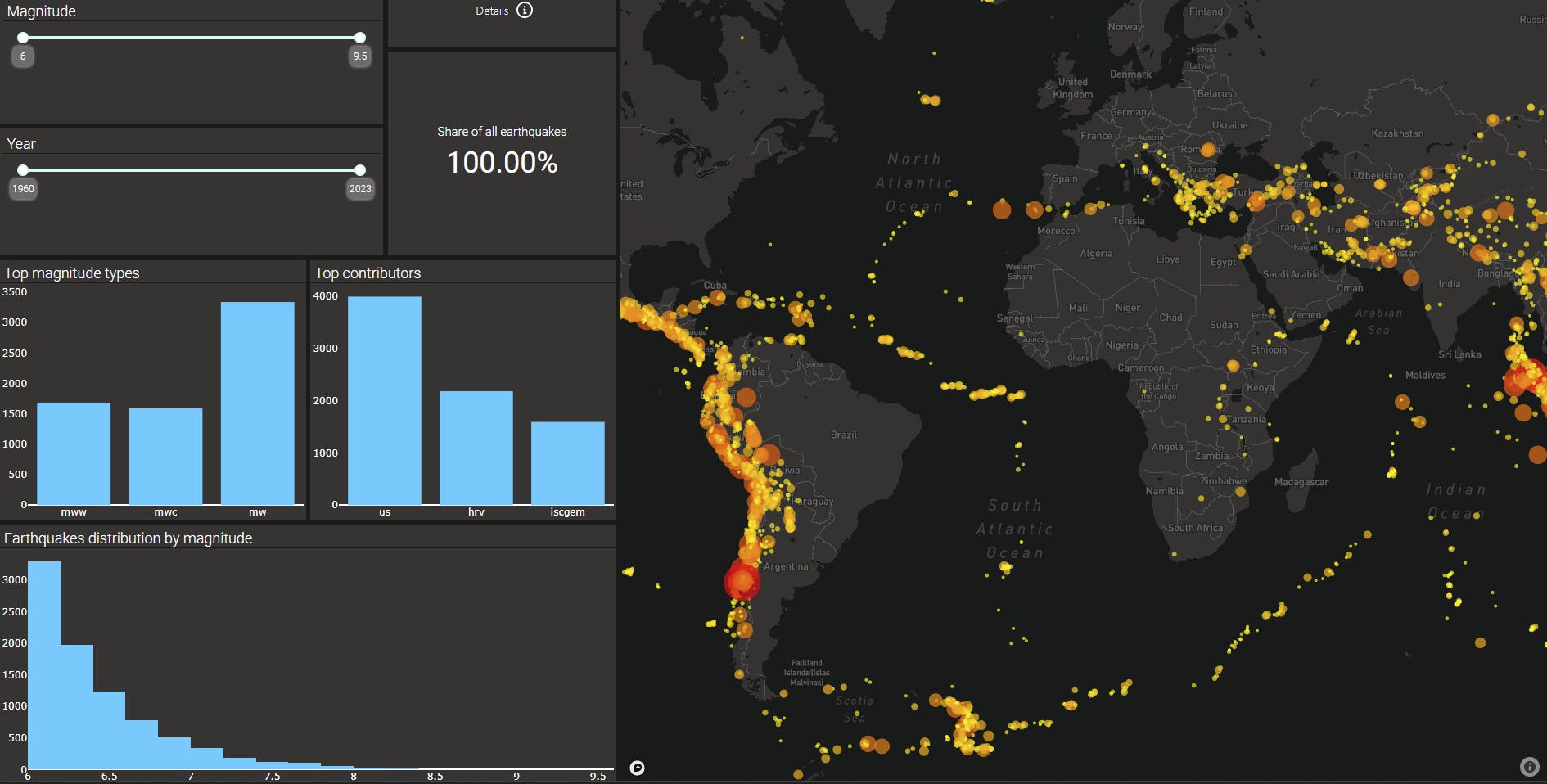
Anastasis Stamatis
June 18, 2024
A Data Scientist's Path to Becoming the CEO
What types of career paths can a data scientist expect to traverse? For Anastasis Stamatis, Plotly community member, it was expanding from hands-on data wrangling and insights to big-picture founder and CEO responsibilities. But, he says, data is his first love and his team occasionally has to curb him from spending too much time on analytics.
Adam Schroeder, Community Manager at Plotly, interviewed Anastasis who shared his journey of moving from data science practitioner to running a sustainability analytics startup and managing his own team of data scientists and other professionals. Read the fascinating story through Adam’s interview snippets with Anastasis.
You can watch the full interview video here.

Adam Schroeder, Community Manager at Plotly, interviewed Anastasis Stamatis, the co-founder and CEO of Dataphoria.
Q&A with Anastasis: How I went from data scientist to sustainability tech startup CEO
Anastasis Stamatis is a co-founder and the CEO of Dataphoria, a Greek data-for-good startup helping companies integrate, manage, and analyze their sustainability data.
He worked as an engineer in the UK before deciding to move back home to Greece to pursue a data science career. As a self-taught data scientist who’d often spent his weekends on personal data science projects, Anastasis uniquely understands the importance of using data to find underlying patterns that make a big impact.
His green-tech startup, Dataphoria, is driven by the important mission of helping companies track their sustainability transition and make informed decisions to maintain and grow sustainability practices.
Walk us through the path that led you to your sustainability analytics company
A bit of context: when I finished high school before starting university, a group of friends and I decided to form an environmental team, called "Time for Action". We started with beach cleanups and reforestations, which escalated into a nationwide campaign where we coordinated hundreds of thousands of people to go do something for the environment.
My profession as a data scientist had some professional impact but the real social environmental impact I wanted to achieve came from volunteering endeavors, including being part of the Global Shapers Community, an initiative of the World Economic Forum, and serving as a European Economic Pact ambassador.
“I saw that technology could help with the transition towards sustainability… I started thinking, how can we use data to advance the transition to sustainability?”
Anastasis Stamatis, Dataphoria co-founder and CEO
I saw that technology could help with sustainability, but I was not applying that in my own life. Then I started thinking, how can we use data to advance the transition to sustainability? Luckily, I found a co-founder in a long-time friend who was an expert in sustainability, and we blended our two specialties.
What does Dataphoria do?
Companies nowadays are required to report on a number of non-financial metrics, such as ESG (environmental, social, and governance) metrics. These indicators show how a company affects and is affected by the environment, how it affects society (including employees, communities, and social changes), and the types of governance it has. These non-financial indicators help determine whether a company is positioned to succeed.
If an investor wants to invest in a business today in Europe or Canada and make a significant return 20 or 30 years in the future, when Europe aims to be a net-zero continent, they will likely invest in companies already working towards net-zero. The European Union, Canada, and other countries are recognizing this trend and are legally requiring companies to collect and showcase information on their sustainability performance.
“We’re creating connectors into all these different company systems—from ERPs to HR management software to simple spreadsheets. We bring everything into a data lake in a single place and then perform specialized analyses to showcase the ESG performance of businesses.”
Anastasis Stamatis, Dataphoria co-founder and CEO
If a company has a challenge collecting financial data, which is mostly quantitative, imagine the difficulty of collecting data on environmental consumption, HR, suppliers, and community impact. What we're doing is creating connectors into all these different company systems—from ERPs to HR management software to simple spreadsheets. We bring everything into a data lake in a single place and then perform specialized analyses to showcase the ESG performance of businesses. This is the analytics-as-a-service model for sustainability that we apply as data experts.
How does Plotly Dash Enterprise come into play?
Plotly Dash Enterprise has been our go-to tool for data visualization and dashboard design since the beginning. I remember watching your Charming Data YouTube videos to learn how to deploy a Dash app for the first time.
“Plotly Dash Enterprise allows us to create beautiful, simplified, interactive dashboards to help non-technical personnel understand what they need to take care of for their sustainability transition.”
Anastasis Stamatis, Dataphoria co-founder and CEO
Basically, what we do is collect data, analyze it, and prepare it in a structured format. Then, we need to showcase it in an interactive, simplified way. That's where Plotly Dash and Dash Enterprise come in. They allow us to create beautiful, simplified, interactive dashboards to help non-technical personnel understand what they need to take care of for their sustainability transition.
Did you have experience with Plotly Dash before starting Dataphoria?
I had some experience with data visualization, but I really got to know it when we had to deploy our first dashboard with Dataphoria. That was the first time I had ever deployed a full-stack dashboard from scratch.
People usually discover the Plotly graphing library first and then build fully-fledged analytic dashboards out of it with Dash. And that was my path—discovering Plotly definitely a long time before going into Dash Enterprise.
Does every company you work with get their own set of dashboards?
We have a few basic dashboards that showcase specific APIs per industry for companies advanced in their sustainability journey. We prepare specialized dashboards with the metrics that make sense for them to see. Most companies are required to report on a couple of hundred metrics, and we distill these down to the essence. We drive sustainability by reducing the number of KPIs from 100 to the top 10-30 that make the most sense to know and monitor.
How do you balance a positive-impact mission with the need for revenue as a business?
The draft version was an NGO helping companies and other NGOs become more sustainable because it felt like a good cause. The concept of stakeholder capitalism talks about how businesses should not just be for profit but also aim to make a lasting social and environmental impact. We are seeing more and more impact-driven businesses that create financially viable models while contributing to sustainability.

An example of a data app to visualize climate change.
“With an impact-driven business, you can keep making the world a better place as long as you provide value to your customers.”
Anastasis Stamatis, Dataphoria co-founder and CEO
This is an amazing notion for me. With NGOs, the donors who fund them are not the ones receiving direct value from the impact. With an impact-driven business, you can keep making the world a better place as long as you provide value to your customers. We received impact investment for Dataphoria, so there's a new generation of entrepreneurs wanting to change the world in a positive way and also get financial returns from it.
What challenges did you face when starting your business?
The most critical thing for us in the beginning was to find our market fit. As a data scientist and Dash practitioner, I know firsthand it's quite a challenge to find the people who will get the most value out of what we're building and the unique way we are building it. For that, you need to be out there talking to customers all the time. It's quite difficult trying to also educate people on this at the same time because it's something so new and constantly changing. The regulations are evolving by the month.
Trying to understand the needs of your client while educating them and seeing how technology fits into that is challenging. The great power that comes with a startup is flexibility. Once we understand the direction we need to move towards, it's straightforward to pivot and explore these opportunities. That's how we found our market fit, at least at this stage.
How did you choose your tech stack for Dataphoria?
The data department of Dataphoria for the first year and a half was basically me, so it was my decision on what tools to use. I knew Python, as a data scientist using Jupyter notebooks for pipelines and charts. When discussing visualization, we considered a point-and-click dashboard but wanted something more scalable and repeatable.
Another part of the tech stack involved not just visualization of results but things like user management and forms for data input. We found Plotly Dash that helped us create a fully developed app with customization, even at the open-source level. As a startup, we had to rely on open source.

An example of a sustainability data application.
“With practice, we achieved high levels of customization and created beautiful, simplified, and mobile-friendly apps. Now, the whole team is very adept with Dash.”
Anastasis Stamatis, Dataphoria co-founder and CEO
That's what got us started with Plotly Dash. With practice, we achieved high levels of customization and created beautiful, simplified, and mobile-friendly apps. Now, the whole team is very adept with Dash, and what we've built has become much more straightforward.
We basically have two large chunks within that process. The first one is ETL—how we get the data in. The other is analytics and visualization, where we use Dash mostly. For the ETL aspect, we have different connectors built into Jupyter notebooks, through which we can connect to various APIs, databases in company systems, spreadsheets, or other files. We then transfer everything into an Azure Data Lake.
From there, we have a process that consumes these files from the data lake into structured databases as needed, with some basic scheduling. These databases are what Dash Enterprise graphs consume to showcase the results. That's the entire process. We developed Dataphoria using simple tools that any data scientist should know, such as Jupyter, Azure Data Lakes, and databases, with Dash for visualization.
What are the main responsibilities of a data company CEO?
Right. So I've taken on several business responsibilities myself. My first and foremost responsibility is to make sure the company does not run out of money. That's the main job, if not the only job, of the CEO.
Other than that, it's bringing in new business — focusing on client acquisition, understanding their needs, and understanding how our offering can serve their needs in a unique and compelling way. I also focus on team culture and what's next — a bit of R&D, ideation, and product development.
How can a data scientist prepare for eventually becoming a CEO?
I feel any leadership position or initiative you can be a part of can really help prepare you for the role of a founder or a CEO. For me personally, it was being part of that group of friends who started Time for Action, as I mentioned. It was also other initiatives at every level of my professional aspect—leading the graduates and students group at the first company I worked for in the UK, or chairing another young professional organization.
“Different initiatives put us in a position to work with other people, to create teams, inspire teams, and deliver results. They can really contextualize what it feels like working with people and build the empathy you would need as a CEO, as well as the strategic thinking required.”
Anastasis Stamatis, Dataphoria co-founder and CEO
All these different initiatives put us in a position to work with other people, to create teams, inspire teams, and deliver results. They can really contextualize what it feels like working with people and build the empathy you would need as a CEO, as well as the strategic thinking required.
I fundraised quite a lot in my life, so I did a bit of the same thing, just that instead of pitching to donors, we were pitching to investors, for example. It's again about trying to understand and focus on that specific situation, and something you learn by doing as well. My first pitch was nowhere near my 100th pitch to any potential business partner or investors, especially at startups. You learn by doing, a lot.
Apply your skills, knowledge, and data to make the world a better place
Anastasis leaves us with these hard-hitting parting words of advice:
It's going to be impact-driven advice coming from a green-tech entrepreneur: we [the Data Science community] are all technical people. We know how to manipulate technology, especially data, which is all the more important.
“Please, please, please apply your knowledge, your philosophy, your technology to contribute to a more sustainable world, because we really need you to.”
Anastasis Stamatis, Dataphoria co-founder and CEO
You cannot imagine how many problems in the world need your skills right now. So what I would like to leave you with is to find that small element that you want to make better in this world. And please, please, please apply your knowledge, your philosophy, your technology to contribute to a more sustainable world, because we really need you to.
Sign up to attend next month’s Plotly Hangouts with data science experts.